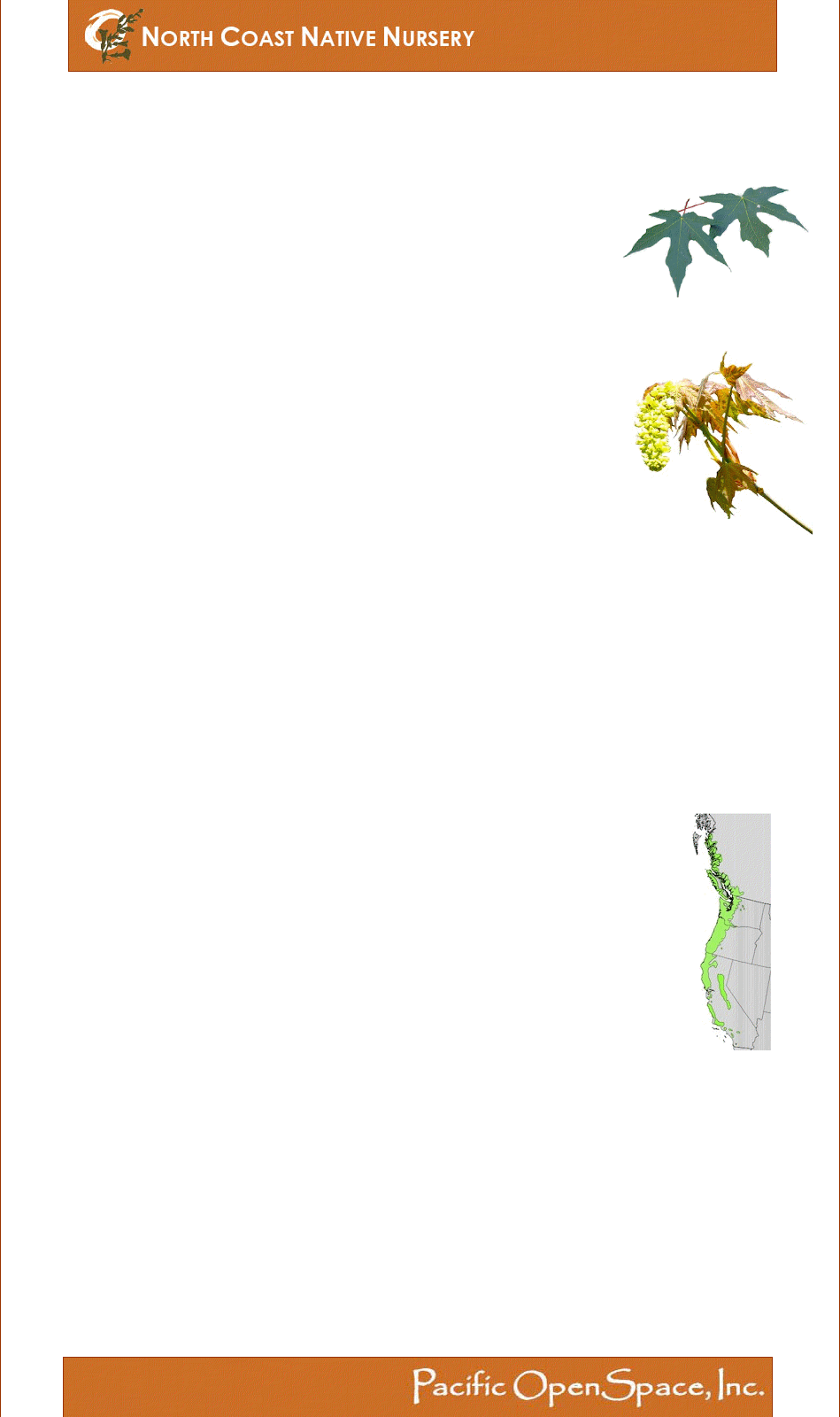
Acer macrophyllum foliage
Range of Acer macrophyllum
from "Atlas of United States Trees"
- Elbert L. Little, Jr.
Bigleaf Maple
Acer macrophyllum
Acer macrophyllum flowers
and new spring growth
Cronquist System |
|
Order: |
Sapindales |
Family: |
|
Genus: |
|
APG System |
|
Order: |
Sapindales |
Family: |
Sapindaceae |
Genus: |
Acer |
Description |
|||
Description: |
Acer macrophyllum is a deciduous tree with a rounded crown. It is said to grow as high as 95 ft. , but 30 to 50 feet is more typical for an open grown tree, and 15 to 20 feet for one in the shade. |
||
Branching: |
Opposite |
||
Leaves: |
Palmate leaves with smooth margins. The leaves are quite large, up to 10 inches across, with deep lobes. |
||
Flowers: |
The bigleaf maple flowers grow in panicles or racemes. In Marin County, they are yellow, but other locations have red or orange flowers. Flowering is often in March or April, sometimes as late as May. |
||
Fruit: |
The seeds are in doubles, hanging by a stem from the branch. Each seed has a wing. |
||
Plant Relationships |
|||
Related California Species: |
Acer circinatum |
Vine maple |
|
Related Exotic Species: |
Acer rubrum |
Red maple |
|
Growing Conditions |
|||
Natural Range and Habitat: |
Bigleaf maple grows throughout almost the entire length of California, north to British Columbia, Canada, and always within 200 miles of the coast. It is more common north of Santa Cruz than to the south. |
||
Sun and Exposure: |
Bigleaf maple is shade tolerant. I rarely, however, see young maple saplings under a deep forest canopy. |
||
Soil and Moisture Requirements: |
Acer macrophyllum grows best where the roots can readily find a stable water supply. This is most frequent in riparian zones, but bigleaf maple can grow well on hillsides with favorable soil and parent material. |
||
Horticulture and Restoration |
|||
Wildlife Habitat: |
|||
Restoration: |
Acer macrophyllum is most commonly used in riparian restoration projects, often in the shade. |
||
Uses in Landscaping: |
When grown in the full sun in good conditions, it has the typical, sturdy maple tree appearance and can grow fairly large. If grown in the shade, as in a riparian zone, it is much reduced in size, with many small branches. |
||
Horticultural Comments: |
Sunset zones 4-17 |
||
Back to start page
